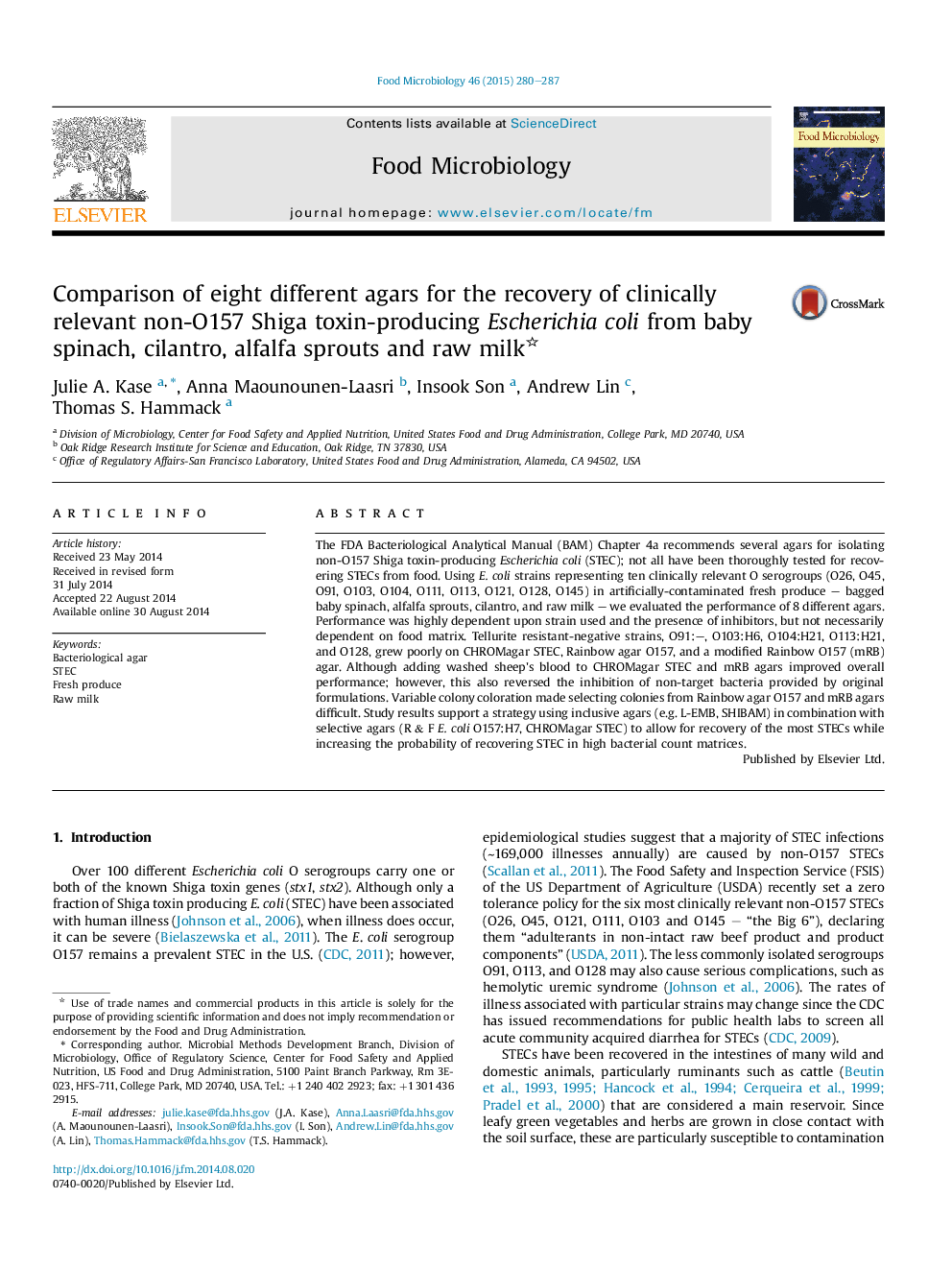| Article ID | Journal | Published Year | Pages | File Type |
|---|---|---|---|---|
| 6288556 | Food Microbiology | 2015 | 8 Pages |
â¢We evaluated 8 agars using 11 Escherichia coli strains added to fresh produce and raw milk.â¢Agar performance was highly dependent upon strain used but not fully on food matrix.â¢terD negative strains: O91, O103, O104:H21, O113, and O128 grew poorly on 3/8 agars.â¢Washed blood added to poor performing agars largely reversed growth inhibition.â¢L-EMB, SHIBAM and R&F E. coli O157:H7 agars gave consistent results for all strains.
The FDA Bacteriological Analytical Manual (BAM) Chapter 4a recommends several agars for isolating non-O157 Shiga toxin-producing Escherichia coli (STEC); not all have been thoroughly tested for recovering STECs from food. Using E. coli strains representing ten clinically relevant O serogroups (O26, O45, O91, O103, O104, O111, O113, O121, O128, O145) in artificially-contaminated fresh produce - bagged baby spinach, alfalfa sprouts, cilantro, and raw milk - we evaluated the performance of 8 different agars. Performance was highly dependent upon strain used and the presence of inhibitors, but not necessarily dependent on food matrix. Tellurite resistant-negative strains, O91:-, O103:H6, O104:H21, O113:H21, and O128, grew poorly on CHROMagar STEC, Rainbow agar O157, and a modified Rainbow O157 (mRB) agar. Although adding washed sheep's blood to CHROMagar STEC and mRB agars improved overall performance; however, this also reversed the inhibition of non-target bacteria provided by original formulations. Variable colony coloration made selecting colonies from Rainbow agar O157 and mRB agars difficult. Study results support a strategy using inclusive agars (e.g. L-EMB, SHIBAM) in combination with selective agars (R & F E. coli O157:H7, CHROMagar STEC) to allow for recovery of the most STECs while increasing the probability of recovering STEC in high bacterial count matrices.
